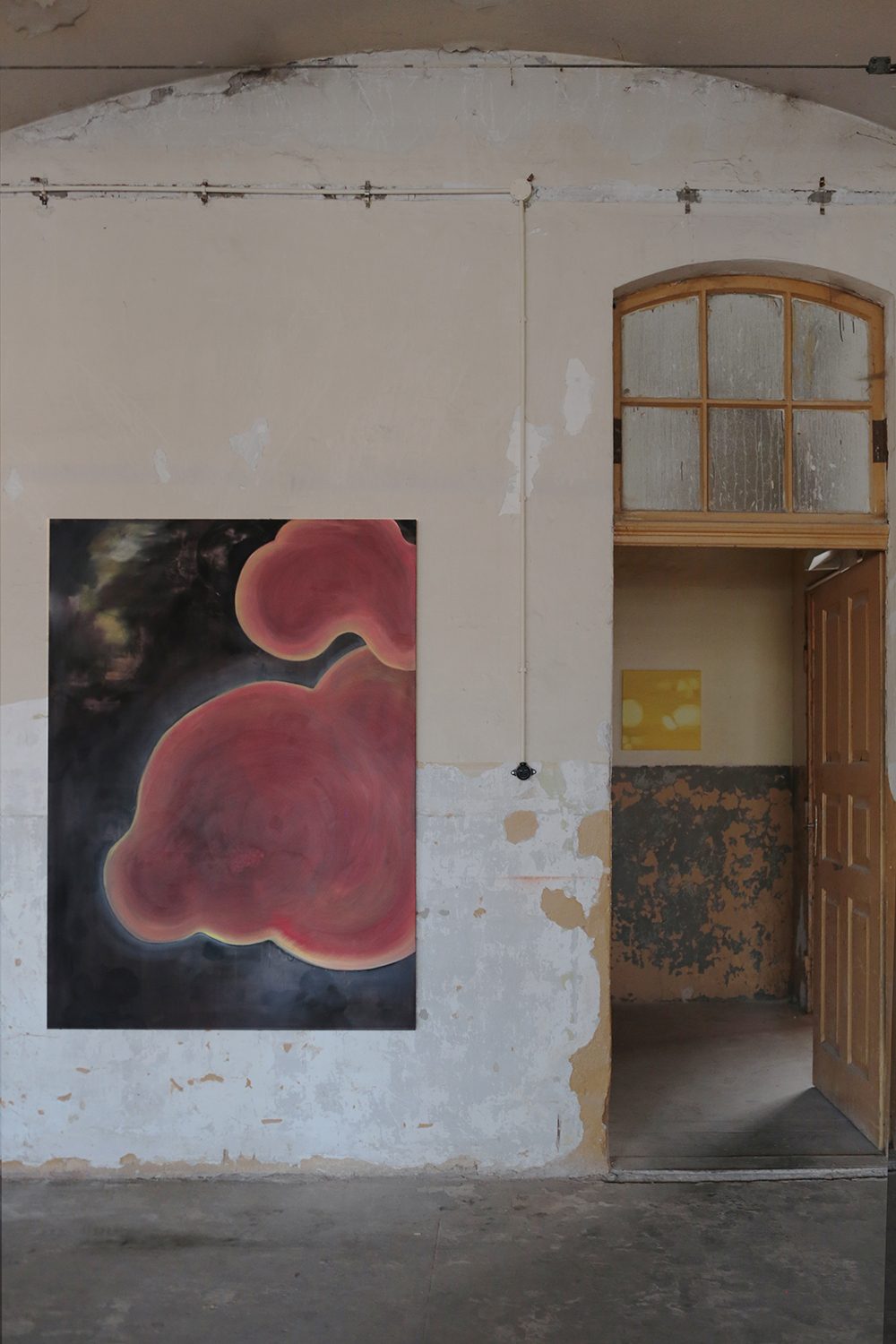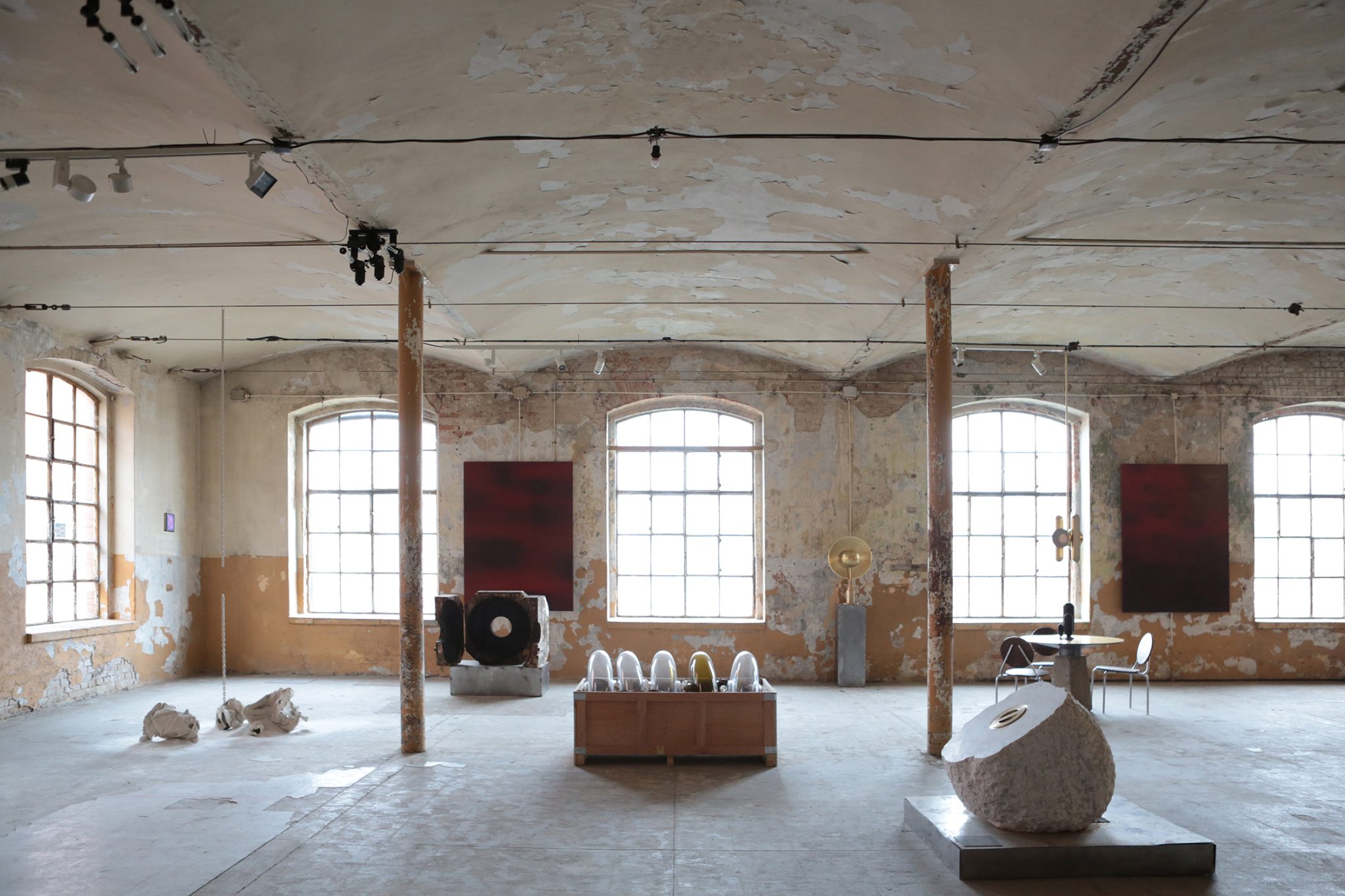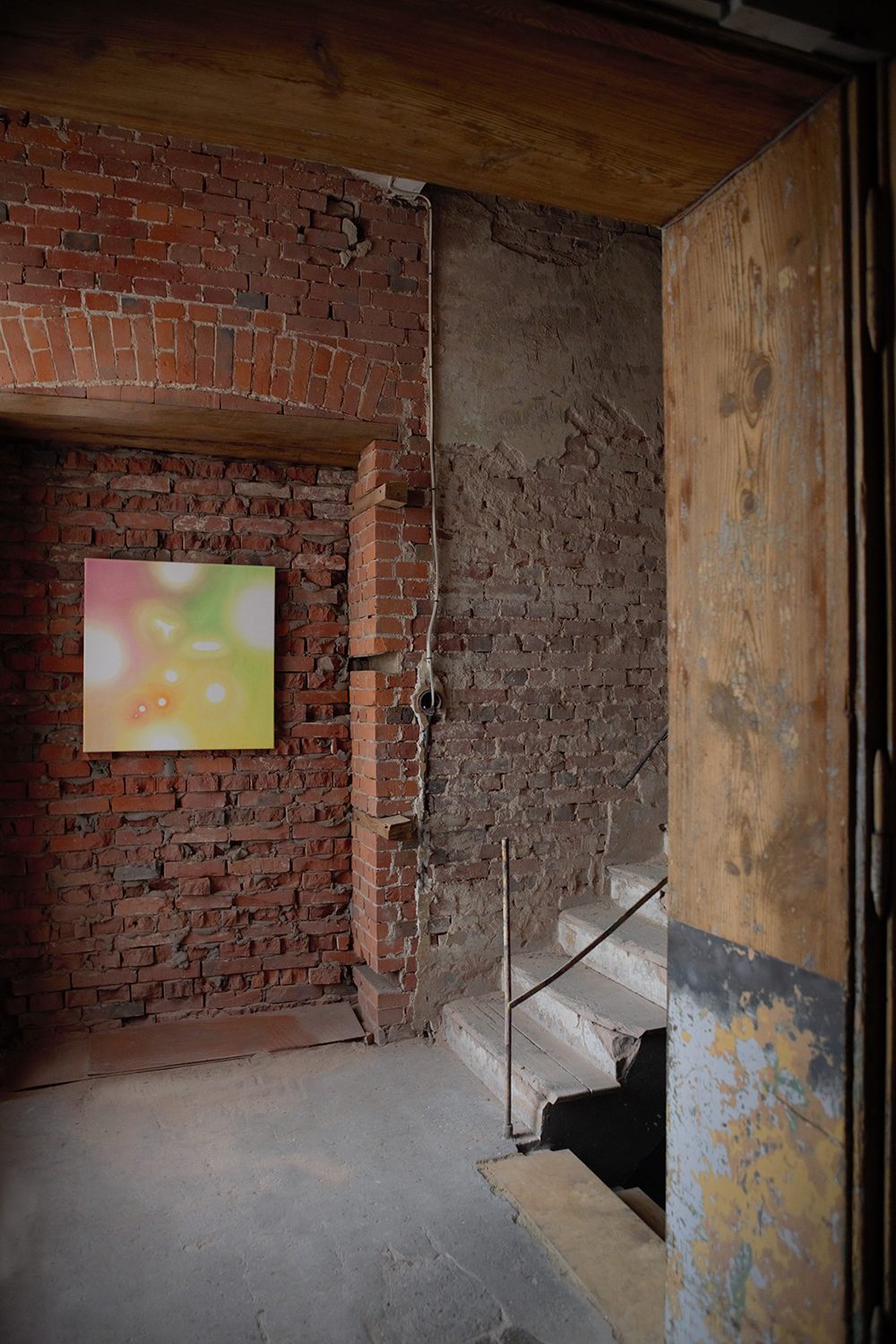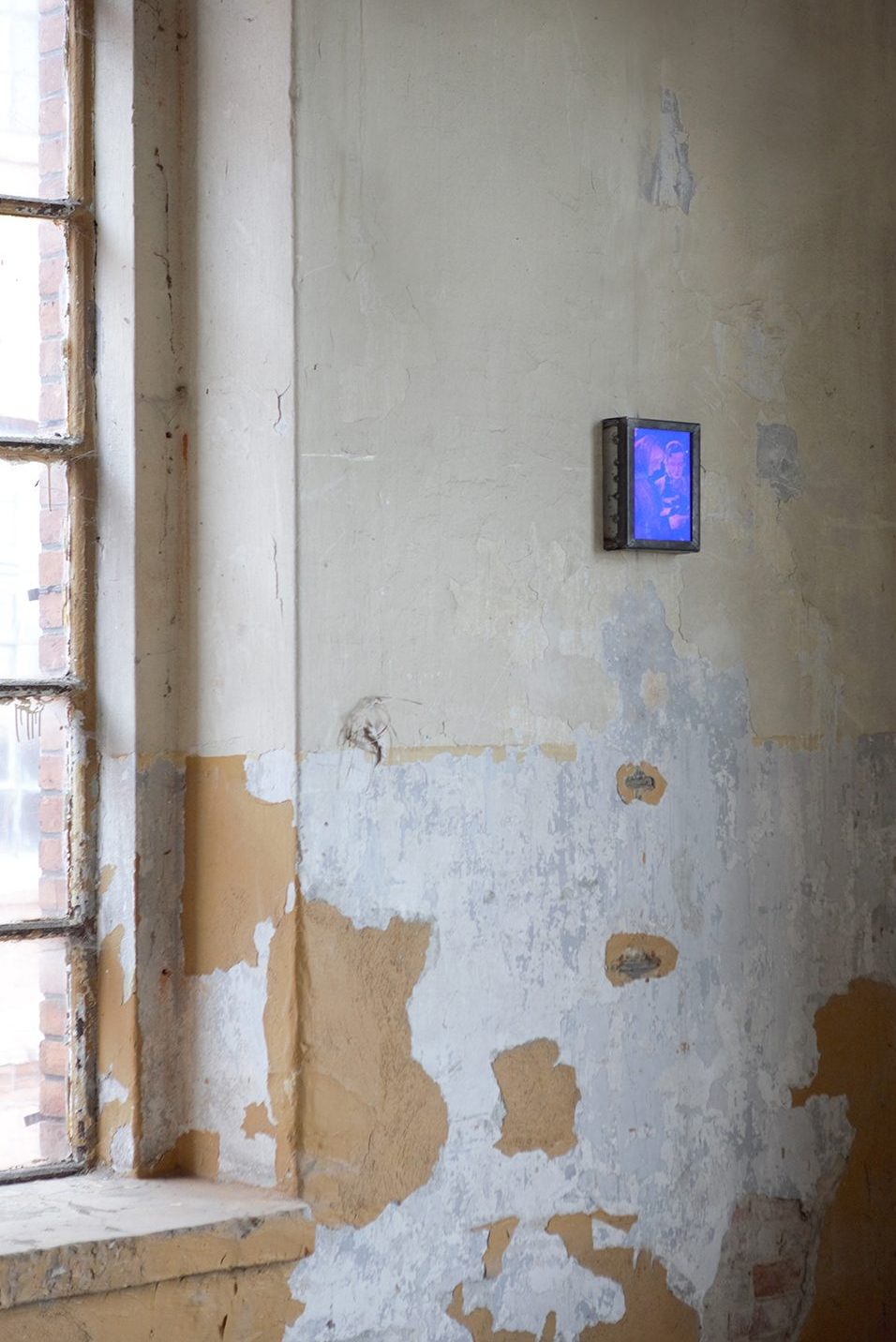
The Object and Its Man
Exhibition by Ewelina Makosa and Jan Garncareck
In their joint exhibition, Ewelina Mąkosa presents abstract oil paintings, multimedia works and installations, while Jan Garncarek exhibits artisanal lamps, tables and censers. The artists put objects at the center of their focus in the title “The Object and Its Man.” Equally questions resonate in my mind: So does man serve to delight in them? And perhaps then he becomes a delight himself? What effect do objects have on man?
Can a person belong to an object?
Ewelina and Jan choose the locations for their studios not by accident. They seek out large, high spaces with history – an old dyehouse in the 19th century factory settlement. There the walls are covered with layers of peeling paint, long touched only by time. Their studio in Zyrardow takes us back to the early 20th century. Its interior radiates sentiment and reverence for the past. This space itself is elevated to the role of a presented object. An object worthy of the works on display and their creators.


It is evening. The space of the former factory hall is impressive and yet cozy. It is illuminated by Jan’s monumental lamps, in which spherical shapes, sphere, and roundness appear particularly often. The use of raw brass introduces softness and vulnerability to the passage of time and the touch of the human hand to the solid, heavy metal lamps. Invited into the interior, they become “masters of ceremony”. Their warm, cozy light and shiny, brushed surface attracts me like a moth. And when I come closer I stop a few steps away from them, even though there is no railing. I feel like I’m in a gallery. The lamps are awe-inspiring because they record every touch of human skin on their surface.

Touch is also an embodied element in Ewelina’s works. The several-meter-long painting suspended in the air bears the black and red marks of her hands – her painting tools. This object is very much out of touch. Slapped or pimped out? Certainly full of curdled and expressed emotions. An energetic record. In many of her paintings I see highlighted organic tissues. Human, perhaps? Perhaps plant-like? Looking at them, I feel as if I am inside a warm body and veins to which the light source has been switched. The images have multiple overlapping planes. In their blood red I see a pulsating, captured moment in the flow of life. In addition to the red, there are also joyful, sunny yellow and orange – juicy, like sweet, flavorful holiday tomatoes.



Experiencing these images, I have the impression that the same life flows in people and plants. In the scattered white sand I see transience-it is in contrast to the redness of life in the paintings. Sand encases everyday objects. I associate the installations with abandoned things from old, abandoned houses, from which Ewelina obtains them. And also with the transformation into dust of objects and their owners. People faster, and the things that are left behind – much slower. Often objects are more durable than people.






